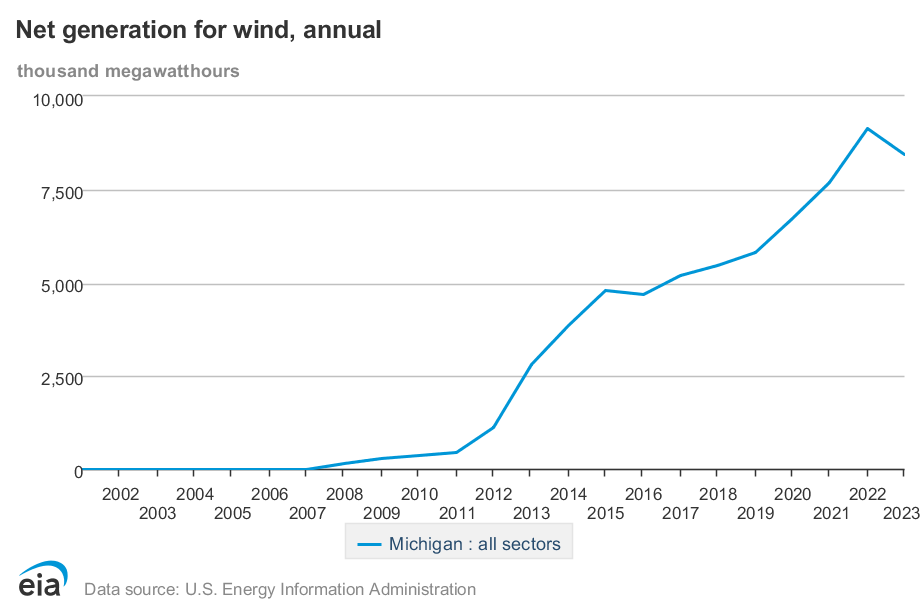
Crescent Wind Farm fuels push for greener Michigan
By Donté Smith
Capital News Service
In the rolling farmland of southern Michigan’s Hillsdale County, the Crescent Wind Farm towers over the landscape, generating renewable energy while stirring both hope and contention among residents.
The wind farm, operated by Consumers Energy in Adams, Moscow and Wheatland townships, is part of the state’s growing push to meet aggressive clean energy targets.
Yet the path from concept to completion was far from smooth.
Crescent, with 60 wind turbines and a capacity of 166 megawatts, has been supplying electricity to homes since it started running in early 2021. That’s enough to power about 75,000 homes.
Tracy Wimmer, a media relations specialist for Consumers Energy, said, “Every megawatt we add to the grid from a renewable source, including those at Crescent, moves us further toward our clean energy plan.”
According to the American Clean Power Association, Michigan ranks 15th in the U.S. for installed wind energy capacity. Wind energy production in the state has steadily increased, from 4,796 gigawatt-hours in 2015 to 9,151 gigawatt-hours in 2022.
Though production dipped slightly to 8,447 gigawatt-hours in 2023, that’s enough output to power about 6.7 million homes for a year.
The Institute for Energy Research attributed 2023’s decrease in production to “unusually low wind speeds,” especially during April, May, June and November.
Consumers Energy remains committed to investing in more wind and solar projects, Wimmer said.
“By 2040, more than 60% of our electric capacity will come from renewable sources, and wind and solar are significant components of that,” said Wimmer.
The utility says that Crescent has benefits beyond its power production.
Wimmer noted that “tax revenue through local property taxes and fees paid to owners for land usage represent significant benefits for communities and individuals where wind farms and other renewable projects are sited.”
Despite such economic benefits, the project initially faced considerable pushback from groups opposing the development, like the Informed Wheatland Citizens. Their concerns included fears of lower property values, changes to the rural landscape and potential adverse health impacts from the turbines.
One of the leading voices against the project was Chris Pollard, a Hillsdale resident who helped organize local activists. Pollard often said that the turbines would “disrupt the local way of life” and said the promises of economic growth might not materialize in the ways proponents suggested.
Douglas Bassette, an associate professor in the Michigan State University Department of Community Sustainability, discussed the challenges of gaining community support for wind farm projects.
“Opposition to wind farm proposals from community members is pretty common, the norm really,” Bassette said, adding that concerns often come from residents living near the turbines who don’t receive any financial compensation.
Wimmer said, “The siting work we have done so far is built on the same principles we intend to carry forward in future conversations about renewable projects — working with local leadership, stakeholders and community members to hear and address concerns, to find room for compromise and ultimately to help even those apprehensive about a project to understand its immense benefits for their region.”
Since Crescent became operational, the Informed Wheatland Citizens group has become less active, and its website is no longer updated frequently.
Asked about balancing community concerns with the desire for renewable energy expansion, Wimmer said, “We’re a Michigan company with over 130 years’ experience working in communities across the state not only to provide the energy our customers need, but to build the relationships that help them thrive.”
